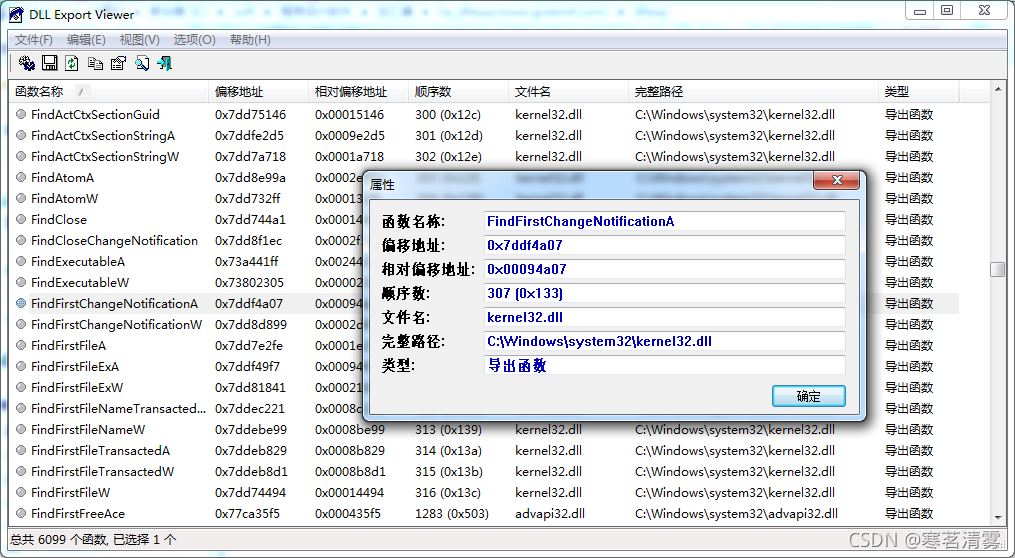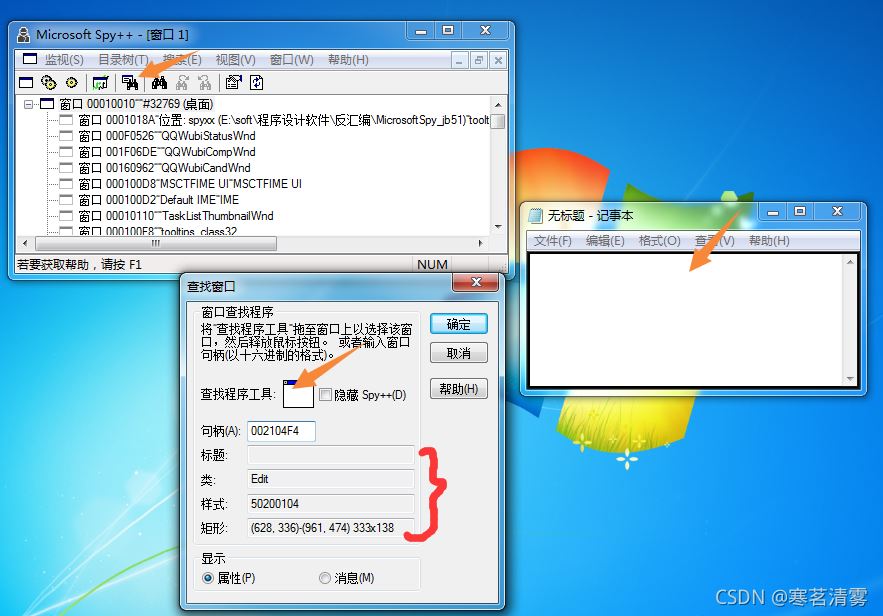C# 网站挂机程序 C#制作网站挂机程序的实现示例
寒茗清雾 人气:0前言
真实的想法是用C#GUI开发一个自动化测试的软件,能帮助我完成500台计算机在线网络答题的压力测试。既要能自动鼠标定位单击操作,也能键盘模拟输入字符信息。但其实想法很丰满,现实很骨感。目前还有一些问题有待于解决。但在完成这个项目的过程中,也产生了一些副产品,也是挺有成就感的。现就开发过程中出现的问题,找到并甄别测试过的一些参考资料,理解和研究心得奉献给大家。特别奉献一个完整的例子:针对网上挂机出现对话框,按回车才能继续。制作了一个简单的“挂机程序”,以此抛砖引玉。希望大家广开思路,共同研究。
提示:以下是本篇文章正文内容,下面案例可供参考
一、程序界面(如下图)
名称:模拟键盘程序,为什么不用挂机程序,是因为其功能弱小,针对的范围窄,而且,它作为副产品,真心不是为挂机而作。请注意我们的目标是:自动化网络测试。

二、使用说明
1.界面说明
1.应用程序路径,这里针对FireFox浏览器,所以需要放程序的地址。
2.网站地址:符合URL格式的能直接访问的本地文件或者网址
3.浏览器标题:FireFox程序已经对应用程序标题作了隐藏,如果看到标题栏显示:测试
其实应用程序的标题应该是:测试 — Mozilla Firefox
4.【启动浏览器】其实这个功能目前完全可以不去管,直接手动启动FireFox即可。
5.【Start】按钮才是本质,这里将根据【浏览器标题】内容来查找
到FireFox浏览网页的真正【句柄】,另外如果找到,将显示【句柄】的十进制整数值,如果显示0,表示未找到。
6.【Stop】将定时器操作禁用。
2.使用注意点
1.显示【句柄】位置启动后,必须是非零值,如果是0,则修改【浏览器标题】内容,重新点【Start】
2.必须保持FireFox浏览器在所有窗体的前面
3.保证【计算机】不会进入【睡眠】或者进入【屏幕保护】状态
三、程序开发过程
1.测试网页
1.文件名:test.html
2.网页代码(如下):
<!DOCTYPE html>
<html>
<head>
<meta http-equiv="Content-Type" content="text/html; charset=utf-8"/>
<title>测试</title>
<meta charset="utf-8" />
</head>
<body>
<script language="javascript">
alert("ok");
</script>
</body>
</html>
2.程序完整代码
using System;
using System.Diagnostics;
using System.Runtime.InteropServices;
using System.Threading;
using System.Windows.Forms;
namespace 模拟键盘
{
public partial class Form1 : Form
{
[DllImport("user32.dll", EntryPoint = "keybd_event", SetLastError = true)]
public static extern void keybd_event(Keys bVk, byte bScan, uint dwFlags, uint dwExtraInfo);
[DllImport("user32.dll", EntryPoint = "FindWindow")]
private static extern IntPtr FindWindow(string IpClassName, string IpWindowName);
//查找窗体控件
public int iSeconds=30;
public delegate bool CallBack(int hwnd, int lParam);
public Process Proc = new Process();
public System.Windows.Forms.Timer myTimer;
public Form1()
{
InitializeComponent();
}
private void btnBrowser_Click(object sender, EventArgs e)
{
openFileDialog1.Filter = "*.exe|*.exe|所有文件|*.*";
openFileDialog1.FileName = "";
DialogResult dr = openFileDialog1.ShowDialog();
if(DialogResult.OK==dr)
{
txtFile.Text = openFileDialog1.FileName;
}
}
string str = "Message";
int iP = 0;
private void btnStart_Click(object sender, EventArgs e)
{
IntPtr hnd = FindWindow(null, txtTitle.Text);//获取句柄
lblMessage.Text = hnd.ToString();
iSeconds = int.Parse(txtSeconds.Text.Trim());
myTimer.Interval = 1000 * iSeconds; //1秒=1000毫秒
myTimer.Enabled = true;
}
private void Form1_Load(object sender, EventArgs e)
{
myTimer = new System.Windows.Forms.Timer();//实例化Timer定时器
myTimer.Tick += new EventHandler(CallBack2);//定时器关联事件函数
}
private void CallBack2(object sender,EventArgs e)//定时器事件
{
keybd_event(Keys.Return, 0, 0, 0);//模拟键盘输入:回车
}
private void btnStop_Click(object sender, EventArgs e)
{
myTimer.Enabled = false;//禁止定时器
}
private void btnStartBrowser_Click(object sender, EventArgs e)
{
if (string.IsNullOrEmpty(txtFile.Text)) return;
try
{
// 浏览器程序启动线程
Proc = new System.Diagnostics.Process();
Proc.StartInfo.FileName = txtFile.Text;
Proc.StartInfo.Arguments = txtNetAddr.Text; //浏览器打开URL参数
Proc.StartInfo.UseShellExecute = false;
Proc.StartInfo.RedirectStandardInput = true;
Proc.StartInfo.RedirectStandardOutput = true;
Proc.Start();
}
catch
{
Proc = null;
}
}
}
}
四、程序开发的一些其它思路及问题
1.采用通过已知进程获取主窗口句柄再遍历子窗口句柄
下面的代码与本程序无关,都是片断,请不要直接复制使用,主要提供有兴趣作提升的人参考。
if (string.IsNullOrEmpty(txtFile.Text)) return;
try
{
Proc = new System.Diagnostics.Process();
Proc.StartInfo.FileName =txtFile.Text;
Proc.StartInfo.Arguments = txtNetAddr.Text;
Proc.StartInfo.UseShellExecute = false;
Proc.StartInfo.RedirectStandardInput = true;
Proc.StartInfo.RedirectStandardOutput = true;
Proc.Start();
Thread.Sleep(2000);
}
catch
{
Proc = null;
}
if (Proc.MainWindowHandle != null)
{
//调用 API, 传递数据
while (Proc.MainWindowHandle == IntPtr.Zero)
{
Proc.Refresh();
}
while (Proc.MainWindowHandle == IntPtr.Zero)
{
Proc.Refresh();
}
//执行代码略
}
【问题说明】:这里的线程是Proc,但这个线程并不是主窗体,这个线程的主窗体句柄需要通过Proc.MainWindowHandle获取。在使用过程中,针对自己开发的C#GUI程序,很容易获取到,对【记事本】程序也正常,但在针对【Chrome】浏览器的时候,则结果要么是0,要么异常,在针对【FireFox】的时候有时能正常获取,有时是异常。
2.网上搜索C#操作API函数的东西很少,且不完整
这里提供一个API函数的查询网站,基本把API函数一网打尽了。http://pinvoke.net/#
3.如果想查看Windows下的API函数,还可以使用工具:
1.DLL函数查看器

2.DLL Export Viewer

4.获取应用程序窗体的句柄、标题、类型的工具软件
这里可以使用VS环境(C++)中的Spy++。

写在最后
有关于C#使用API函数,因为个人爱好不同,参数类型也是千差万别。真正的体验类的文章也比较少。谬误就更难解决了。后期,准备作一深入体验,同时准备写一个系列文章。虽然笔者能力有限,到时谬误肯定也不少,但笔者坚持所有内容注重实践。程序必须调试通过,正常才会放到网上。有志同道合的读者不妨关注一下笔者博客,敬请期待,下期再见!
加载全部内容